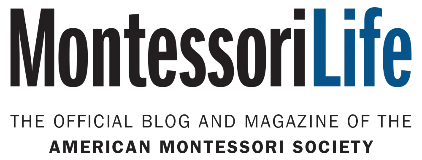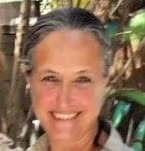What does it mean to practice Montessori education with integrity? The answer may not always be straightforward and brings up other questions that are not easy to answer. In Part 1 of this series, we explored the nuanced distinction between descriptors like authentic, high-fidelity, and implementation with integrity. We asked, for example, if a program can be implemented with integrity, even if it is not authentic in the strictest definition of that word. In Part 2 we focused on the inclusion of diversity, equity, and inclusion (DEI) and anti-bias, antiracism (ABAR) principles as essential to quality program implementation. We noted that while there are no formal statements in official Montessori guidelines related to DEI and ABAR, many schools, districts, and teacher education programs have integrated these ideas into professional development and other training.
A further challenge in evaluating program quality is that some schools, both public and independent, face systemic barriers—legitimate, mandated, or arbitrary—preventing high-fidelity and/or authentic implementation. We focus on those barriers, and the consequences that ensue, in this final installment of the series.
Barriers to Implementing a High-Fidelity Montessori Program
The American Montessori Society (AMS) addresses public Montessori schools here, providing statistics, fundamentals, important dates, and the following barriers to implementation:
- Lack of knowledge about basics of Montessori philosophy and method on the part of principals and/or other school or district administrators
- Emphasis on state standards vs. following the Montessori curriculum
- Focus on state-mandated testing, which can compromise the character of the Montessori program
- Pressure to use extrinsic rewards [i.e., a token economy], especially in schools with both Montessori and non-Montessori classes
- Inability of schools to be released or exempted from state or district regulations in order to implement practices aligned with Montessori
While these specific barriers may be more present, or at least more of a challenge, in public Montessori schools, some independent schools face some of the same challenges. What are the factors underlying these barriers, and, more importantly, what are their impact on program quality? Let’s explore these questions, beginning with a few of those barriers listed above.
Lack of Knowledge of Montessori Philosophy
Contributing to this barrier is the shortage of Montessori certified and trained individuals, from teachers to administrators. State-certified teachers from within a public school district are often hired with the promise of Montessori training down the road, and in some cases, this happens later rather than sooner. Likewise, public Montessori schools sometimes hire administrators from within or outside the district who have an administrative or business background, but no Montessori training or experience. With little or no knowledge of the rationale for multi-age classrooms, long periods of uninterrupted work time, or a full complement of Montessori materials, for example, administrators may make decisions based on budgetary constraints, staffing, student numbers, building space, etc.
To be fair, the author has taught in independent schools where student numbers determined class configuration. In one school, for example, there was a large group of first- and second-year students, and many fewer Upper Elementary (UE) students. The administration’s solution was to move the third-year students to the UE classroom, resulting in a more even split between the student numbers in each classroom.
Based on numbers alone, this seems to be a logical and fair solution. To recognize why it is problematic, one needs to understand the rationale underlying the Montessori multi-age classroom, which is not an arbitrary configuration, but one based on the planes of development. Students in each of the three-year classrooms (3 – 6 years; 6 – 9 years; 9 – 12 years; 12 – 15 years) share the same set of developmental needs and predispositions—cognitive, social, physical, moral, and emotional. The curriculum is carefully designed to match the developmental characteristics of the child within that three-year age range.
Reconfiguring classrooms based on student numbers alone creates a situation where children who have not met the milestones of one developmental plane are placed in a classroom where the emphasis is on a different set of characteristics and expectations.
Most problematic of all may be depriving the child of their capstone year—literally, the finishing stone of a structure. It is the culminating academic experience for students, when all the pieces come together, where the child’s learning is solidified and their knowledge consolidated, as new possibilities for growth and further learning begin to emerge.
The third year in a Montessori classroom is also the leadership year, when the child becomes an academic and social role model while continuing to build their own skills. This increases self-confidence, which puts them in a position of readiness for their upcoming experience in the next classroom. Those third-year students who were moved to the UE classroom in the example above missed this formative experience.
Multi-age classrooms, in their original configuration, together with fully trained Montessori teachers, are among the core elements of Montessori education and major components of a high-fidelity program.
Standards and Testing vs. Montessori Curriculum
Because public Montessori schools—charter, magnet, or other—are part of local school districts, their students are subject to the same state testing requirements as other public school students, with the results included in the overall district testing profile. Many public Montessori school teachers, therefore, are under the same pressure as other public school teachers for their students to perform well on tests. John Chattin-McNichols, AMS past president and 2014 AMS Living Legacy, explains the challenge this presents in The Hard Work of Public Montessori:
Over time, there has been a trend to focus school curricular activities more narrowly on areas that are tested … [this] lets the developers of tests set the nation’s curriculum. Montessori education [on the other hand] uses a curricular approach and a variety of teaching methods that have been chosen based on information about child development.
Because of the misalignment between the Montessori curriculum and specific skill items that appear on tests, portions of the Montessori curriculum may be compromised in order to make time for teaching test-related skills. (As an aside, many private Montessori schools administer a variety of tests, even standardized tests, to give children practical experience in test-taking skills.) Montessori educators understand that only a very narrow range of skills can be measured in state mandated testing; therefore, teachers facilitate development of the whole child—not only in all areas of the curriculum but also in areas of child interest that will never be tested. If teachers are put in a position where they must compromise on Montessori curriculum, the integrity of the curriculum may begin to unravel.
Again, and in all fairness, this is not an exclusively Montessori matter. Many teachers—public, independent, Montessori, non-Montessori—are challenged to balance test preparation with a rich, diverse, and engaging curriculum.
In an online AMS workshop, Creating a Culture of Spontaneous Activity, Melina Papadimitriou, AMS director of teacher education, addresses a number of ways that Montessorians can educate and develop relationships with principals, districts, and communities so that Montessori isn’t seen as “esoteric or even intimidating.” Among her recommendations is showing administrators and school boards how specific Montessori materials are used to meet district and state standards, and to explain areas where misalignment may show up in test results—in third grade math, for example. Because Montessori doesn’t force abstraction, the child may not test well in this skill, even though they understand the underlying concepts due to their work with the materials. The child may arrive at abstraction later than third grade, but it will happen, and likely with a greater understanding than if they had simply memorized a formula. Papadimitriou advises that:
This message has to be given to district administrators so they understand ahead of time. We may need to buy time to practice Montessori faithfully and at the same time meet the standards in a wider, looser frame of time. Trust has to be developed for this to work [emphasis added].
This takes time and effort on the part of Montessorians—time and effort well spent if the result is a high-fidelity Montessori program. Readers are encouraged to read about the work AMS is doing with Championing Montessori in Public Schools Initiative (CMPSI), work that supports education for superintendents and principals about the tenets of Montessori education.
State or District Regulations vs. Montessori Practices
This is an especially relevant topic given the 2022 legislation impacting how we teach and learn about racism and diversity in schools. As of May 18, 2022, 42 states have introduced bills or taken other steps that would restrict how teachers can discuss a range of topics related to race and racism, according to an Education Week Analysis; and dozens of states will consider LGBTQIA+ legislation during the 2022 legislative session:
Some bills will seek to advance the comprehensive nondiscrimination laws that LGBTQIA+ people so sorely need, while others will almost certainly attempt to single out and target LGBTQIA+ people for unfair and unequal treatment.
We wrote elsewhere that while independent Montessori schools are protected from such legislation, public schools are, in fact, subject to restrictions passed in their states and localities. This is true, of course, for all public schools, where many teachers have, unfortunately, been forced into a position to dilute their history, literature, and social-emotional learning curricula, for example, in order to comply with idiosyncratic state mandates. Again, this barrier extends well beyond the walls of public Montessori classrooms.
Staff training and professional development may also, unfortunately, be impacted by this legislation, which, in some cases, mandates teachers to go through a civics training program while, on the other hand, removing requirements that they participate in professional development work related to ABAR and/or DEI training. This allows districts to impose training in areas that may indeed have some educational benefit, but that do not, necessarily, contribute to the implementation of Montessori program quality.
In Part 2 of “Montessori with Integrity,” we discussed at length the inclusion of diversity, equity, and inclusion (DEI) and anti-bias, antiracism (ABAR) principles as central to Montessori’s Peace Education and, consequently, essential to high-fidelity program implementation. But the barriers restricting DEI and ABAR related topics in the curriculum in a majority of states may impact program quality in some public schools. The reader is referred to the hard work being done by the
HThe opinions expressed in Montessori Life are those of the authors and do not necessarily represent the position of AMS.


